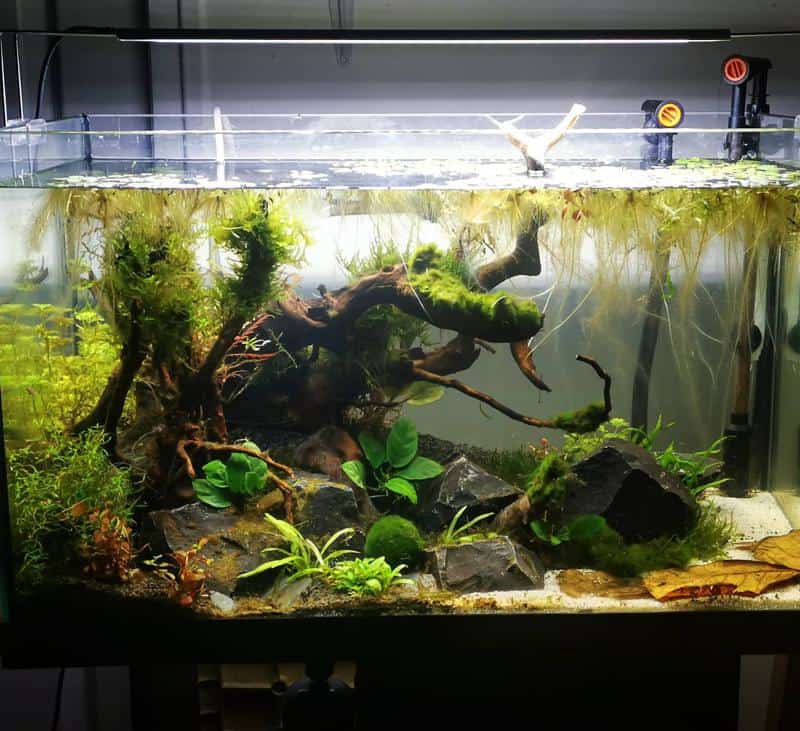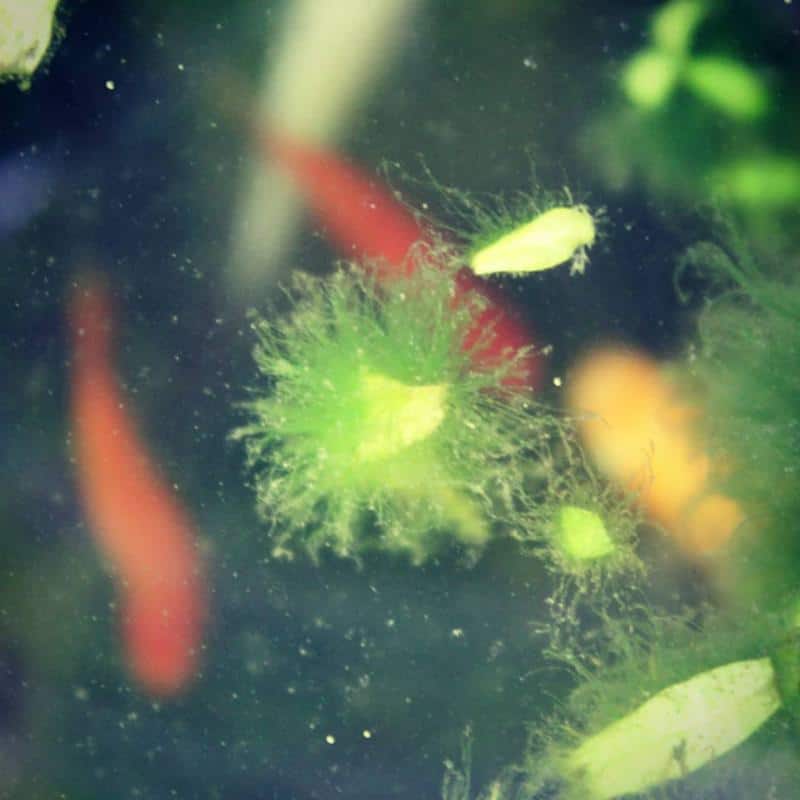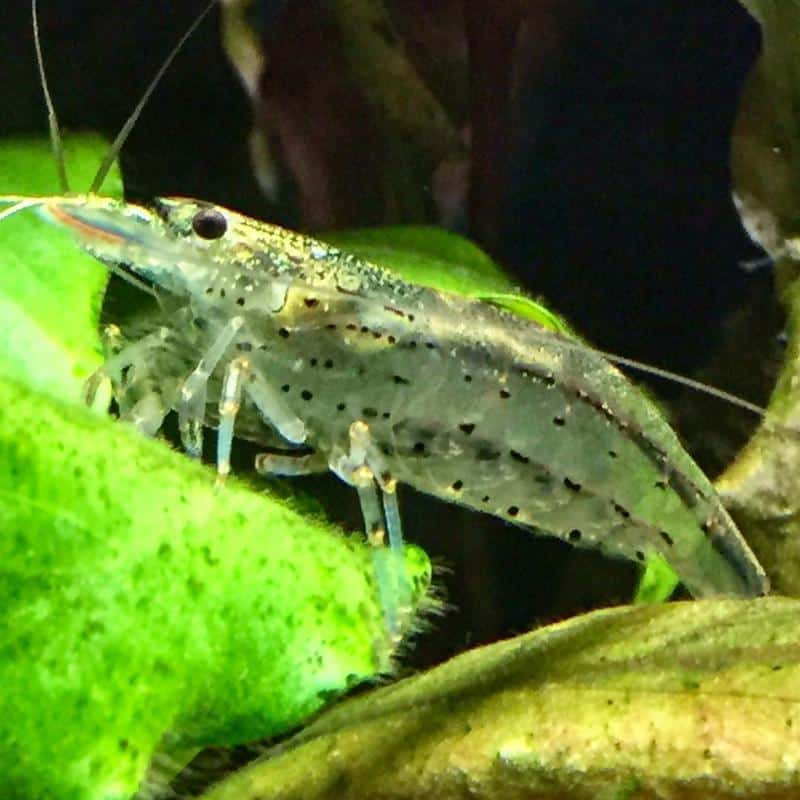Good lighting and the right nutrient level. These are some of the conditions needed, not just for our fish, but also for algae to grow. This is why your tank bed and the wall are sometimes overgrown with small moss-like plants.
The growth of algae in a fish tank is inevitable. As long as there is water with nutrients and a good source of light, algae will always grow. With this, is it essential to kill algae in fish tanks?

Join us in this article as we examine what algae are and how to control their population in a tank set-up.
Phycological Definition of Algae
There are many definitions of what an algae is, like the ones stated in the book Freshwater Algae: Identification, Enumeration and Use as Bioindicators (2015) (2015).
Algae is simply defined as a group of plants that are aquatic, photosynthetic and eukaryotic (has nucleus). The branch of science that deals with their study is called phycology.
The size range of algae greatly varies. Some are microscopic, while some are gigantic like the 30-meter kelp. Algae are unique amongst their cousins in the plant kingdom since they do not have true roots, stems and leaves.
There are over 400,000 species of algae, and they all produce oxygen as a result of photosynthesis.
Fun fact: 70% of the oxygen we breathe from the atmosphere comes from algae.
Types of Algae

Based on the ecosystem they thrive in, the general classification of algae we know of are freshwater algae and saltwater algae (also called as seaweeds). However, scientifically, algae are classified according to their chlorophyll – the main photosynthetic pigment that absorbs light.
According to color pigment, these are the major types of algae:
Chlorophytes
Also called blue-green algae, chlorophytes have chlorophyll A and B, which when combined, gives out a green pigmentation.
Rhodophytes
It has chlorophyll A, chlorophyll D, and the red protein phycoerythrin. This is the reason why they are called red algae.
Phaeophytes
Aside from chlorophyll A and chlorophyll C, Phaeophytes have the obese-prevention compound fucoxanthin that gives off a brown pigment, thus they are called brown algae.
Growth and Development of Algae
There are 3 main methods of algae reproduction. They can reproduce asexually through the release of spores in the water. With the right conditions, each spore will develop into a new plant.
Algae is also capable of vegetative reproduction. When a part is broken off from the body, it becomes a new organism.
On the other hand, and surprisingly, algae can reproduce sexually. With the union of 2 opposing gametes (male and female sex cells), a fertilized egg called zygote is formed and will grow into a new plant.
Regardless of the mode of reproduction, algae will only develop if sunlight and nutrients (particularly phosphorus and nitrogen) are present. If conditions are met, algae will start to develop in numbers.
Moreover, if conditions are extremely viable (like too much light and high in nutrients), algae will go into a rapid development phase called “bloom”. This is when water discoloration occurs. Similarly, this is the reason for a red tide where water turns red (sometimes green or brown) due to the excessive population of algae.
Causes of Algae Growth in Fish Tanks
Although it took me a semester to study how algae flourish in an ocean ecosystem or lake environment, let us spend only a few minutes and focus on a smaller space like a fish tank and what causes algae to grow on them.
Many have been wondering why algae grow in their fish tank when they did not purchase one in the pet shop. Let us dig into the source of algae and the factors that allow them to multiply and flourish.
Algae-Infused Water
Water is the number one ingredient for algae to thrive. Not unless you are using pre-boiled water, then most probably your tank water already contains microscopic algae.
Even if you use bottled water (which I did and still do with my tank), algae will eventually start to grow. We have to remember that there are other sources of algae, like live aquatic plants and bed materials.
Too Much Artificial Light
In general, a fish tank requires 2 watts per gallon ratio of lighting. In a typical 30-gallon tank, this equates to 60-watts of light or 800 lumens.
In the event that you use a higher wattage ratio, not only will it stress out your fish, but you will also induce algae growth. We have to remember that algae are photosynthetic organisms and that the presence of light (whether natural or artificial) triggers photosynthesis, and thus their development.
On top of that, excess light equates to heat production. In effect, the warming of your tank water becomes conducive to algae development. Prolonged exposure to light, like in the case of nighttime, allows the continuous nourishment of algae.
Direct Exposure to Sunlight
Artificial aquarium light (like fluorescent, LED, or metal halides) emits 10-15 lumens per watt. This is significantly far less when compared to sunlight. Indoors, sunlight can still emit up to 90 lumens per watt.
So, can you imagine how happy algae are when they are exposed to sunlight? Their population will suddenly explode and your tank water will slowly start to discolor.
Not only that, even if you place your tank away from direct sunlight, surrounding ambient light can still influence rapid algae growth.
Overfeeding
As of this moment, we would like to clarify that you cannot overfeed algae with commercial feeds. No. Overfeeding in this case refers to your fish.
When you give too much fish feed, it will definitely not be consumed right away by your fish. Some of the excess feed may stay afloat, while some may sink at the bed. Over time, the excess feed will start to decompose.
As feed decomposes, it breaks down and releases nutrients which will now become the food for algae.
Nutrient Build-up
Over time, as the excess feed continues to degrade, nutrients are continuously released into the water. There will come a point that your water will become a primordial soup for algae growth.
On a nutrient build up, expect algae to bloom. Typically, water discoloration starts from light yellow to light green, to totally green indicating an algae bloom.
By this time, we know you have a question about the influence of ammonia. In a nutrient build up, you can expect ammonia levels will also rise. However, this is favorable for the algae as ammonia contains nitrogen – their building protein.
Infrequent Water Change
When you combine brightness, excess feeds, and nutrient build up, it becomes the perfect ingredient for a tank disaster. Much worse if you have stagnant water. If this is the case, then your tank will become similar to an anoxic pond.
Measures to Control Algae Growth
Microscopically, it is normal to have a minimal quantity of algae in your tank. It is part of nature.
But what is not normal is a bloom where algae become dominant and wipe out other residents in your tank.
Here are the measures that you can follow to control rapid algae growth:
Decontamination upon Stocking
Purpose: to prevent infusion of algae
While it is not advisable to boil water before stocking as it destroys essential nutrients, there are measures to prevent and minimize the source of algae that can be infused in the water.
Avoid using water from the pet shop. In most cases, when you buy a fish, the water that is packed together with your fish comes from the pet shop’s tank.
Try to use your own water and condition it against algae. By adding ¼ teaspoon of bleach for every gallon of water, you are guaranteed that your water is algae-free for weeks.
Bleach kills both algae and your fish. Make sure you do this before stocking the fish and allow a couple of days for the bleach to dissipate. This works similarly with anti-chlorine agents.
Using the same bleach-enriched water, you can soak your live aquatic plants and bed materials. In this way, algae spores that are temporarily attached will be killed and will have no chance of developing into a fully grown alga.
Reduction of Artificial Light
Purpose: to minimize algae photosynthesis
We are NOT recommending that you get rid of your artificial light. Instead, you can change or decrease the wattage.
Another technique that you can consider is the use of a light controller. You can program the usage of your aquarium light.
Perhaps, you can pre-program it so that it will automatically turn off when artificial light is not necessary. An example of this is during noontime where sunlight is at its peak.
Installation of Auto-Feeder and Filter
Purpose: prevents overfeeding and nutrient build-up
One of the reasons why we put too much food in one feeding is that we are lazy. We don’t exert extra effort in following the feeding schedule of our fish.
Auto-feeders are great equipment to combat our laziness. In this way, it only gives the exact amount of food at the exact time you programmed it. If there is excess food, then it is minimal and poses no threat to massive biodegradation that can lead to nutrient buildup.
Moreover, having a filter installed will ensure that excess food is scrubbed out.
Constant Water Change
Purpose: prevent stagnant water
Water change is a part of aquarium maintenance. In algae prevention, it doesn’t just prevent the stagnation of water, but it also reduces the overall algae population itself.
Usually, a 25% water change is done weekly. This also equates to 25% of the total algae population being taken out of the tank. Moreover, the algae concentration is further diluted with the addition of fresh new water.
Natural Ways to Prevent Algae Growth
Without the use of tools and equipment, nature has created natural algae-deterrent species.
Live Aquatic Plants
When we speak of aquatic plants, what comes to our minds is that it provides oxygen and increases the aesthetic beauty of our tank.
Looking at its biology, aquatic plants also consume nutrients. They compete with algae in consuming the nutrients present in the water. In this way, aquatic plants lessen nutrient buildup.
Plecostomus
Scavengers like the Plecostomus are a great asset against algae prevention. These bottom feeders eat both the excess food and the algae themselves.
Amano Shrimp

Even if they are small (5 cm), they have a big appetite for algae. In fact, this crustacean is considered the best algae eaters. For a 20-gallon tank, it only takes 5 Amano shrimps to control algae growth.
Cleaning an Algae Bloom
We hope it will not happen to you, but algae bloom is always a threat, especially if the control measures are not followed. In my case, I was unlucky and I was hit by an algae bloom once.
Luckily, I was able to reverse the adverse effects and restored my tank by following these simple steps:
Save and Transfer All the Living Residents
Whether it’s the start of water discoloration or a full algae bloom, your first priority is to save all living residents in your tank.
Take out all the fish, aquatic plants, and other living organisms. In another container, place them temporarily in clean water.
Discard the Contaminated Water
Once all living organisms are out of the tank, drain all the contaminated water. If you are living near lakes, rivers or seas, do not directly discard the contaminated water.
Instead, place it in a container and treat it with bleach. Allow it to settle for a couple of days before discarding it. In this way, you are preventing another possible algae bloom wherein the magnitude could be massive.
Clean and Disinfect the Tank and Its Equipment
After a bloom, algae must have clung on to your tank wall and equipment, like filters and hoses. Clean it and brush off all the algae.
Do not use detergents. Instead, use a small amount of bleach or vinegar diluted in water.
Are Algae Good for Fish?
Perhaps, this is the most significant question since we give more importance to our fish rather than the algae.
We reiterate that algae are naturally occurring in the water. Actually, it is beneficial for the fish to have some algae population present in the tank. Aside from acting as a natural nutrient filter, some species of fish eat algae.
Algae only become a problem when their numbers are too high like in an algae bloom. They consume more oxygen than they produce. In effect, the dissolved oxygen level will suddenly decrease causing massive fish mortality.
Read More:
- What Is kH in Aquarium?
- How to Clean Fish Tank Gravel?
- Brown Hair Algae: How To Manage Them?
- How to Treat White Algae in Your Fish Tank?
- Best Black Beard Algae Eaters
- How to Keep Fish Tank Clean
Conclusion
Algae is the perfect example of the saying: too much of something is bad. In normal conditions, it is okay to have algae in our tank. In fact, they are beneficial and serve a purpose.
Control measures against the proliferation of algae have been established. They are easy to control. But if we neglect them causing the algae to bloom, then expect adverse effects to happen. Sadly, it is our beloved fish, and not the algae, that is greatly affected.